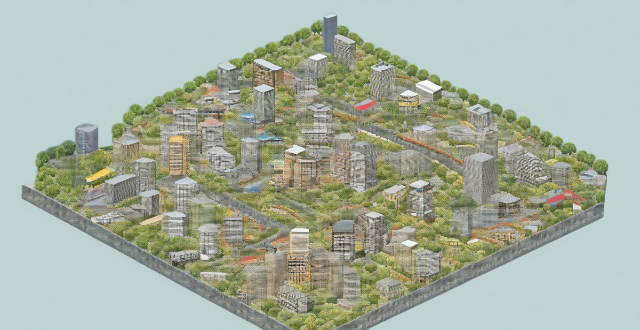The text discusses the impact of shared mobility on urban planning and design, highlighting its potential to reduce traffic congestion, alter land use patterns, necessitate infrastructure changes, and promote environmental sustainability. It suggests that shared mobility can lead to decreased need for parking spaces, improved public transit usage, repurposing of underutilized areas, higher density living, enhanced cycling infrastructure, electric vehicle charging networks, designated ride-hailing zones, reduced emissions, and promotion of green spaces. The conclusion emphasizes that shared mobility is a fundamental shift in transportation modes that challenges traditional urban planning paradigms and offers opportunities to create more efficient, sustainable, and livable urban environments.

Shared Mobility and Its Impact on Urban Planning and Design
Introduction
Shared mobility, including car-sharing, bike-sharing, and ride-hailing services, has become an increasingly popular transportation mode in many cities worldwide. This trend has significant implications for urban planning and design. In this response, we will explore how shared mobility affects various aspects of urban planning and design.
Traffic Congestion Reduction
One of the most immediate impacts of shared mobility is the potential reduction in traffic congestion. By offering more efficient transportation options, shared mobility can help to reduce the number of private vehicles on the road. This can lead to less congestion and shorter travel times for everyone.
- Decreased need for parking spaces: With fewer private vehicles, there may be a reduced need for extensive parking facilities.
- Improved public transit usage: As shared mobility options become more prevalent, people may choose to use them as a complement to public transit rather than driving.
Land Use Efficiency
Shared mobility can also influence how land is used within a city. By reducing the need for individual parking spots, space that was once dedicated to parking can be repurposed for other uses such as green spaces, housing, or commercial development.
- Repurposing underutilized areas: Areas that were once designated for parking could be transformed into parks, plazas, or community gardens.
- Higher density living: With less space required for parking, developers might opt for higher-density housing projects.
Infrastructure Changes
The rise of shared mobility necessitates changes in urban infrastructure to support these new modes of transport effectively. Cities must adapt their infrastructure to accommodate bike lanes, charging stations for electric vehicles, and pick-up/drop-off zones for ride-sharing services.
- Enhanced cycling infrastructure: More bike lanes and bike-sharing stations are needed to support increased cycling activity.
- Electric vehicle charging networks: As electric vehicles become more commonplace, cities must install adequate charging infrastructure.
- Designated ride-hailing zones: To prevent chaos at busy locations, designated zones for pick-ups and drop-offs should be established.
Environmental Sustainability
Shared mobility offers environmental benefits by potentially reducing the number of vehicles on the road and promoting the use of more sustainable transportation methods like biking or walking short distances to reach a shared vehicle.
- Reduced emissions: Fewer cars mean less exhaust pollution and greenhouse gas emissions.
- Promotion of green spaces: Reclaimed parking spaces can be turned into green areas that help mitigate the urban heat island effect and improve air quality.
Conclusion
Shared mobility is not just a passing trend; it's a fundamental shift in how we think about moving within our cities. It challenges traditional urban planning paradigms and offers opportunities to create more efficient, sustainable, and livable urban environments. As cities continue to evolve, embracing shared mobility will be crucial in shaping their future landscapes.